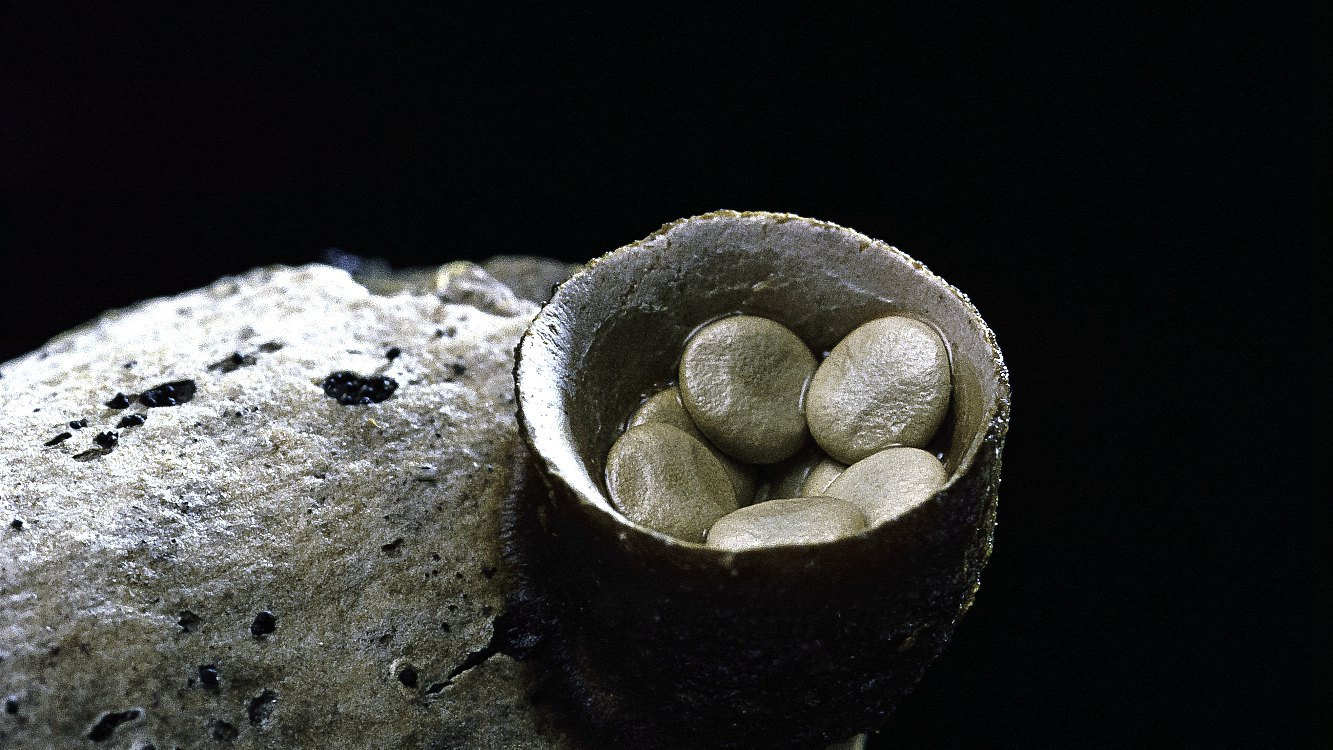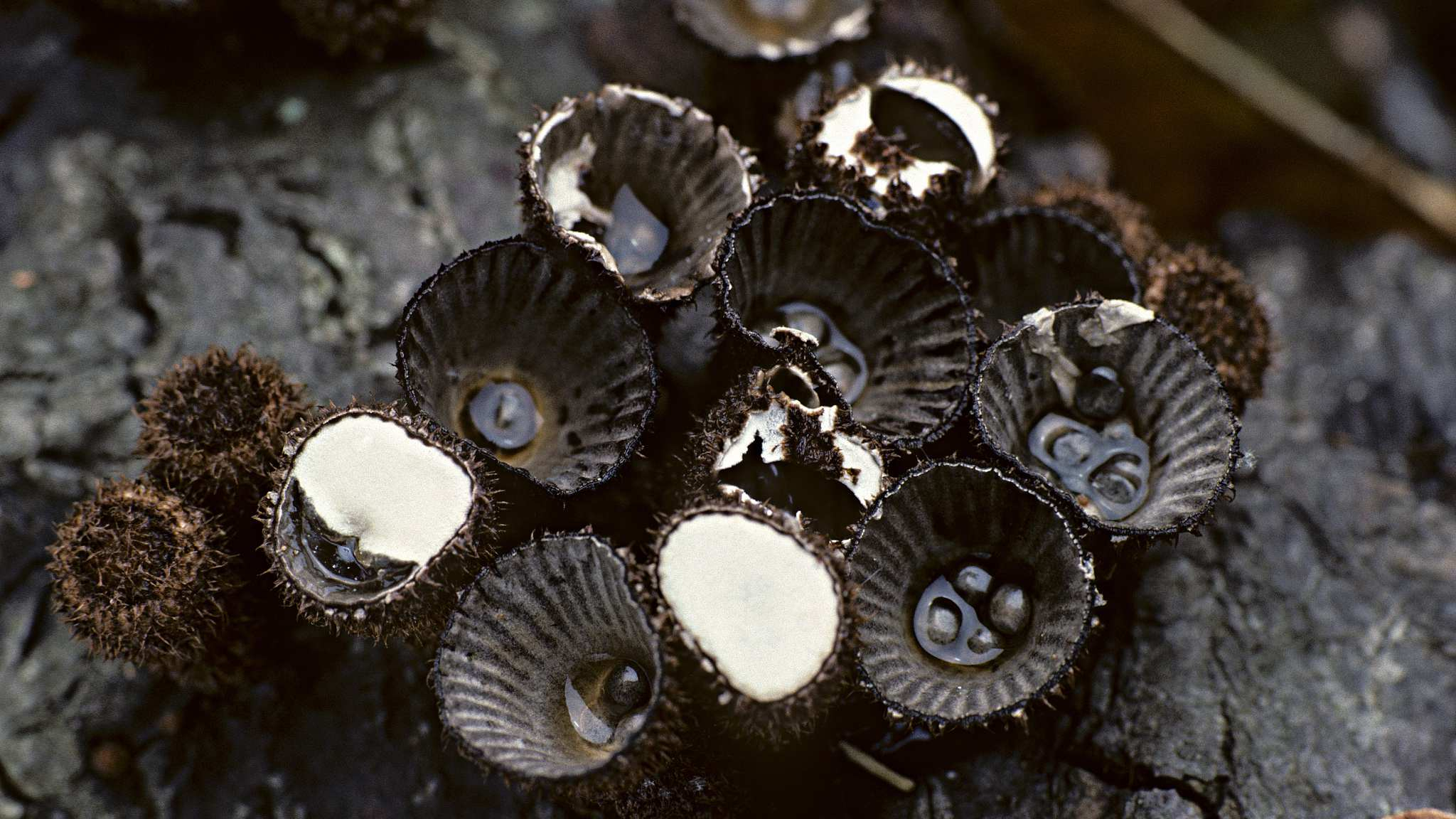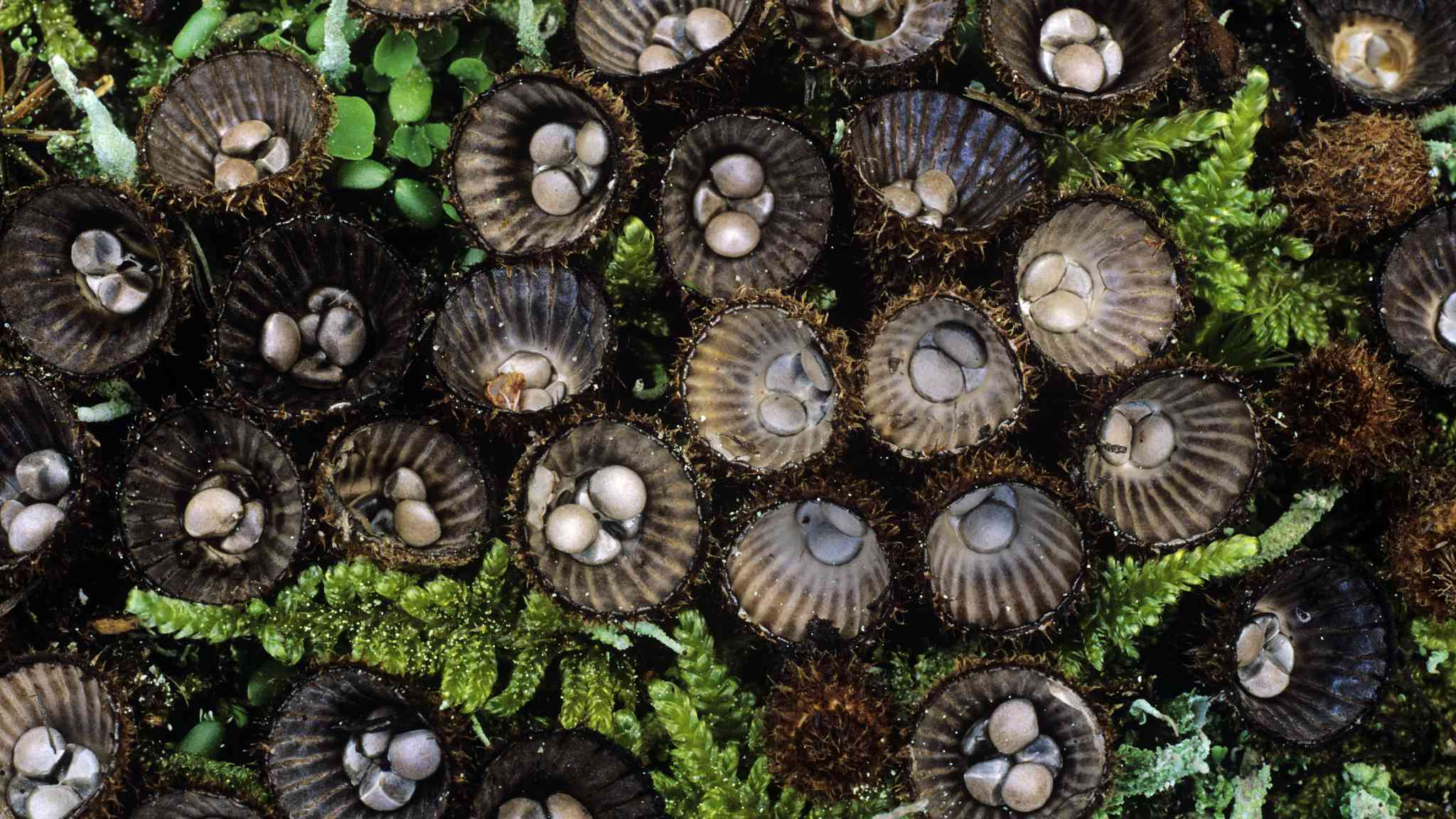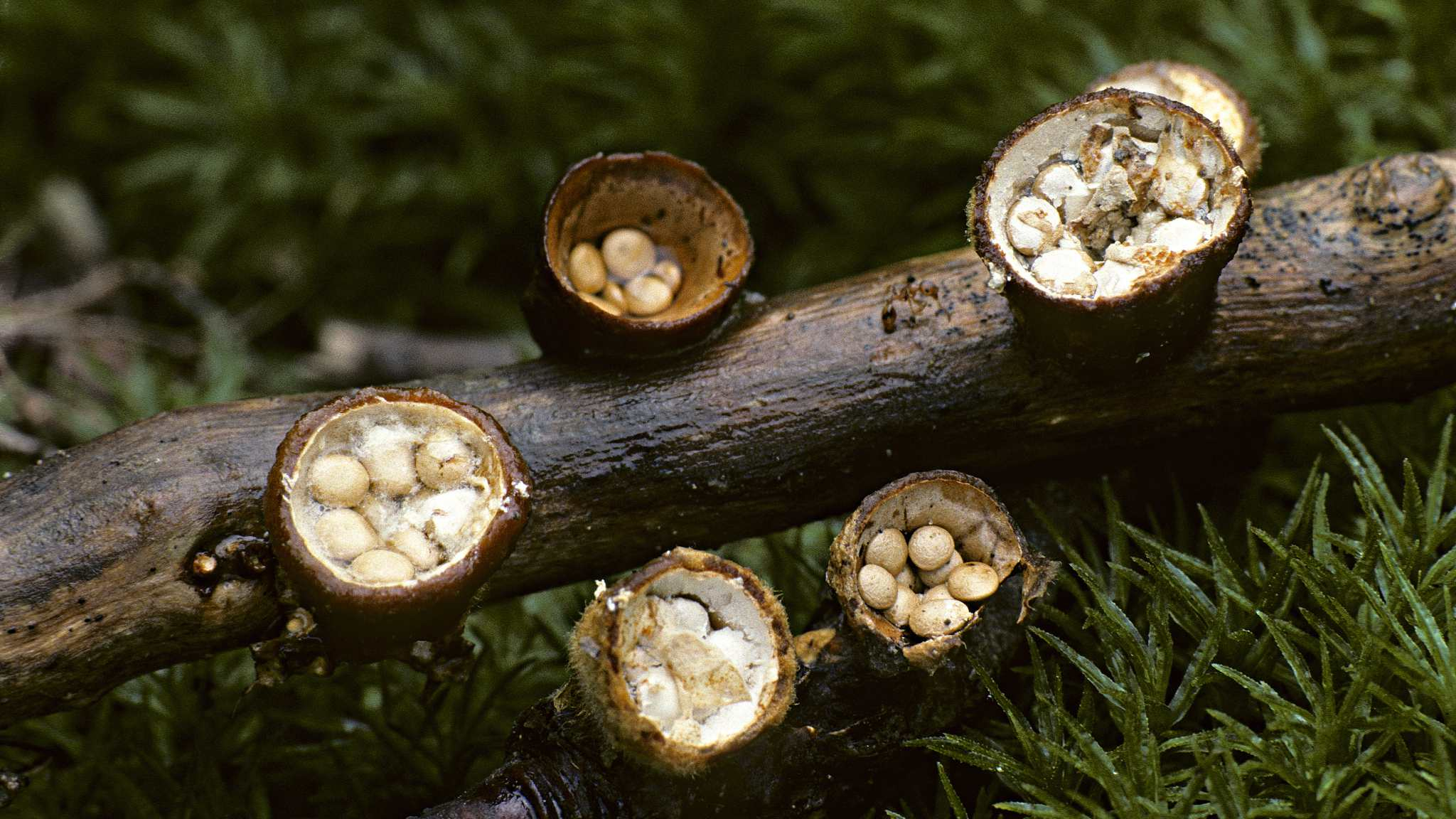
Plant
09:52, 19-May-2019
Alien Fungi: The drifting life of bird's nest fungi
Updated
10:08, 19-May-2019
By Zhao Ying

In the decaying wood or horse dung, there thrives a cluster of tiny bird's nest-like fungi with four or five eggs inside each cup. Named bird's nest fungus, it's known for its dandelion-like drifting life.
Unlike the nutritious bird's nest in Chinese bird's nest soup, bird's nest fungi are inedible due to its small size and leathery texture. Each little cup is around 4 to 8 millimeters wide, about one-third of the diameter of a one dollar coin. In spite of that, native people still use certain species as an aphrodisiac.

Splash cup mushrooms (Cyathus striatus). /VCG Photo
Splash cup mushrooms (Cyathus striatus). /VCG Photo
As tenacious drifters, bird's nest fungi can be found on dead wood or on woody fragments in cow or horse dung. Some species like fluted bird's nest fungus (Cyathus striatus) can endure the drought and cold winter in temperate North America.
Before opening, the top of each buff-brown nest-shaped fruiting body is covered with a whitish membranous lid. When the lid is torn up, the black-grey or dark brown eggs are exposed to the air. They are called peridoles, which contain the reproductive spores.

Striated bird's nest mushrooms (Cyanthus striatus). /VCG Photo
Striated bird's nest mushrooms (Cyanthus striatus). /VCG Photo
Bird's nest fungi usually appear in the early spring rainy season, and their reproduction process is highly dependent on raindrops. As its nickname “splash cup” suggests, the eggs or peridoles in the nest can be ejected high into the air by the falling splashes of raindrops.
Each peridole is attached to the inner surface of the nest by a slender stalk which contains a coiled funicular cord with sticky ends. The flying stalk will then adhere to the first solid object that they encounter, such as plants or branches.

White-egg bird's nest fungi (Crucibulum laeve). /VCG Photo
White-egg bird's nest fungi (Crucibulum laeve). /VCG Photo
When the sticky cord ends are dried, the bird's nest fungus will settle down and release the spores it carries to the new habitat. After completing one life cycle, they prepare for the next journey.
Alien Fungi
What is the most ancient land-based life after the bacteria? The answer is inconspicuous fungus! As the industrious decomposer in the natural world, fungi have existed for almost a billion years, at least 500 million years older than the first land plants. In the series “Alien Fungi”, we will explore some peculiar-looking fungi with alien features and see how they enjoy their eternal, cryptic lives on damp floors, decaying wood, and hidden areas.
Read more:
(Cover image via VCG)
(If you want to contribute and have specific expertise, please contact us at nature@cgtn.com)

SITEMAP
Copyright © 2018 CGTN. Beijing ICP prepared NO.16065310-3
Copyright © 2018 CGTN. Beijing ICP prepared NO.16065310-3